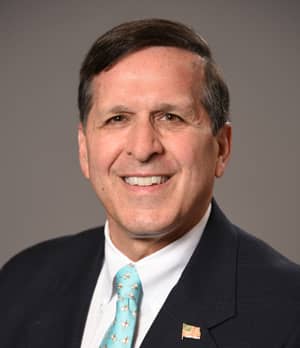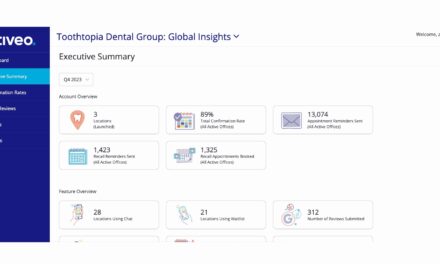By focusing on your practice’s observation program, referral marketing, and treatment coordinator you can take steps today that will have an impact on your practice’s bottomline.
By Roger P. Levin, DDS
There are many factors involved with operating an orthodontic practice today. You must develop leadership skills, provide excellent care and five-star customer service, manage the team and practice finances, and create scheduling policies and protocols. The good news is that all these complications can be quickly diminished by implementing excellent systems and knowing what the priorities are and where to start.
We can discuss how to improve your orthodontic practice from a 100,000-foot view. However, real improvement can only be made by acting. Here, I will focus on three highly specific measures that any orthodontic practice can take to immediately improve practice performance.
1. Re-define the observation program.
We’ve had tremendous success increasing orthodontic practice production for clients within a few short years by simply redefining the observation program. Most practices have a very loose observation program where a child is “put into observation,” and seen on some cycle (if they make the appointments). They aren’t even considered patients of the practice until the day they start. As one orthodontist told me, “They are not paying so they are not real patients.”
Redefining the observation program starts with defining every observation patient as a “real patient”—whether they’re paying or not. The goal is to view observation patients as patients to ensure that they will follow through with treatment at the right time. Practices that are used to patients automatically accepting treatment at the end of the observation program should be aware of the intense new competition in orthodontics. Unless observation patients feel that they are already part of the practice, we predict that many will shop other options at the time they are told they are ready.
Observation patients and their parents must be included in all aspects of practice communication, marketing, contests, and fun on a 6-month cycle. I have had orthodontists push back on the 6-month concept from a clinical standpoint and I would never argue with an orthodontist about what is clinically essential. But I would argue that it makes sense to bring them in every 6 months to perform a full exam and let the mother know when the child is 6 months away from being ready for orthodontics. Further, have the treatment coordinator alerted and ready to present the case. Anything that deviates from this basic recommendation will ultimately result in fewer observation patients converting into treatment patients.
2. Up your referral marketing game.
Referral marketing may be the single most contributory factor to the success of the orthodontic practice. In any business, the two most critical functions are marketing and sales. Referral marketing represents the marketing function. The goal is for an increasing number of new patient phone calls to be attracted to the orthodontic practice each year.
Most orthodontic practices have some level of referral marketing. Typically, the largest amount is focused on the patients themselves. However, we recommend that there are five marketing focus areas that should be addressed by every orthodontic practice: patients, parents, referring doctors, social media, and the community.
We recommend patients, parents, and the community each have five strategies, referring doctors up to 15 strategies, and social media up to 30 strategies. Keep mind that the quantity of strategies is just as important as the quality.
All too often, orthodontic practices have limited marketing in certain categories of the five focus areas. We often find that they take the easiest approach, which is to have a few strategies focused on the kids and possibly hire an outside firm to handle social media. This offers the least amount of work for the practice, but it doesn’t reach enough parents and patients and referring doctors to continue to attract a high level of referrals.
Every orthodontic practice should develop an annual marketing calendar and employ a part-time or full-time professional relations coordinator (PRC) to carry out the program and ensure continuity, consistency, and success.
3. Measure all aspects of the treatment coordinator.
The treatment coordinator (TC) is an essential member of the orthodontic team. He or she saves an enormous amount of time for the orthodontist. The TC position has a singular goal and that is sales. A TC with a high close rate is invaluable. But there are numerous other factors:
- Based on our observation of thousands of practices, 98% of orthodontic treatment coordinators have no sales background. This is a sales position and some level of training, education, and experience become essential.
- TCs should be responsible for all aspects of sales. Very few practices measure the number of potential new patients who call the practice and never make an appointment for a consult. This is one of many measurements that should be included in the TC’s tracking regimen, and practices often find significant opportunity once this is measured.
- TCs should provide orthodontists with a brief report each day. The report should include the number of new patients seen, number of closes, number of rejections, number of new patients that made appointments that day for consults, number of patients that entered the observation program, and the total number of observation patients. This quick report will help keep everyone focused on the strengths, opportunities, weaknesses, and threats facing the orthodontic practice.
- TCs should strive for a 90% close rate on new patients. If a patient is willing to come to the practice for a consult, then the TC process should result in a start 9 times out of 10. If the TC has a close rate below 90% there is opportunity for improvement, and it’s essential to identify where those improvements can be made. One orthodontic practice leader we knew was always opposed to patient financing because they believed their payment plans were sufficient. After noting a decline in their new patient starts following consults, a new script was written to include patient financing options. This helped to increase the start rate almost instantly.
- It’s important to know when the TC is entering a slump. Just like any elite athlete, a TC can go through ups and downs for various reasons ranging from the mix of patients appointing for consults to not being as energized and enthusiastic as usual. The TC is sales position and salespeople need to create energy, enthusiasm, and trust in the perspective patient and parent.
The three recommendations outlined above will help any orthodontic practice to rapidly improve performance. Each practice should take the time to assess their current situation and capabilities and apply any of the recommendations to improve performance and maintain that higher level of success. OP

Roger P. Levin, DDS, is the CEO and founder of Levin Group, a leading practice management consulting firm that has worked with over 30,000 practices to increase production. A recognized expert on orthodontic practice management and marketing, he has written 67 books and over 4,000 articles and regularly presents seminars in the United States and around the world. To contact Levin or to join the 40,000 dental professionals who receive his Ortho Practice Production Tip of the Day, visit levingroup.com or email [email protected].










